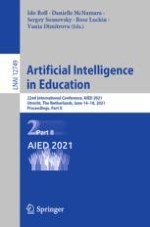This two-volume set LNAI 12748 and 12749 constitutes the refereed proceedings of the 22nd International Conference on Artificial Intelligence in Education, AIED 2021, held in Utrecht, The Netherlands, in June 2021.*
The 40 full papers presented together with 76 short papers, 2 panels papers, 4 industry papers, 4 doctoral consortium, and 6 workshop papers were carefully reviewed and selected from 209 submissions. The conference provides opportunities for the cross-fertilization of approaches, techniques and ideas from the many fields that comprise AIED, including computer science, cognitive and learning sciences, education, game design, psychology, sociology, linguistics as well as many domain-specific areas.
*The conference was held virtually due to the COVID-19 pandemic.
